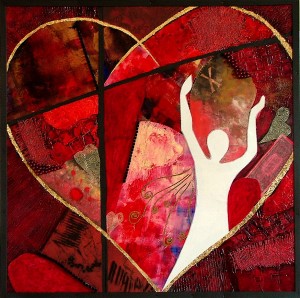 The Program for Women recesses in January and will resume in February on Tuesday, February 3 at 6:30 p.m. All Welcome!
The Program for Women recesses in January and will resume in February on Tuesday, February 3 at 6:30 p.m. All Welcome!
Category Archives: Adult Faith Formation
Program for Women
Comments Off on Program for Women
Posted in Adult Faith Formation
FAITH MATTERS: Who Was Jesus of Nazareth?
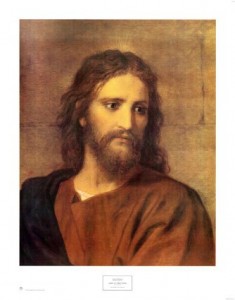 Over the next few weeks, we begin to focus on Jesus, the second person of the Trinity and the person on whom Christian faith is based. To begin with, we will take a look at Jesus’ story as it has been handed down to us in the Gospels. Then we will investigate what Christians believe about Jesus.
Over the next few weeks, we begin to focus on Jesus, the second person of the Trinity and the person on whom Christian faith is based. To begin with, we will take a look at Jesus’ story as it has been handed down to us in the Gospels. Then we will investigate what Christians believe about Jesus.
One of the most important things to remember about Jesus is that, despite what Christians have come to believe about him in the last 2000 years, he was born and lived his life as a Jew. So it is important for us, as Christians, to understand Jesus as a part of the history of the Jewish people.
Modern day scholars do not have a lot of definite information about Jesus’ background. But from the hints that we are given in the New Testament and from what we know of the time that he lived, we can put together a reasonable picture of what Jesus’ life was like.
The New Testament, aside from the Birth Narratives in Matthew and Luke, tells us almost nothing about Jesus’ life before he began preaching and healing as a grown man. But we do know that Jesus’ mother was a woman named Miriam (“Mary” is the English form of this ancient Hebrew name) and that Miriam was married to a man named Joseph, who was a builder of houses. When Jesus was born, he was named Joshua, an important and historically significant Hebrew name that meant “God saves” (“Jesus” is the Greek form of Joshua). Jesus was born somewhere around the year 4 BCE and he grew up in a village called Nazareth in Galilee, the northern part of Palestine. He grew up speaking Aramaic, the everyday language of the Jews. As he grew older, he probably learned Hebrew, the language of the Hebrew Bible, so that he could read the Scriptures when called on in the synagogue. He probably also knew a little Greek, the language of commerce in the Mediterranean, and maybe even a smattering of Latin, the language of the Roman conquerors of Palestine. Jesus’ father, Joseph, was a skilled artisan. We have traditionally called Joseph a carpenter, but, as there was little wood in the area, he probably built houses out of stone and brick. This was a highly skilled line of work and Joseph was probably employed by the Romans and Greeks living in Capurnum, Tyre, and the other gentile towns in the area. Jesus, as he was being trained by his father, would have gone to these towns with his father and would have been exposed to Greek and Roman culture and religion. Because of his status as a skilled artisan, Joseph and his family were probably what we would call middle class. This was very unusual; people in the ancient world tended to be either very rich or very poor.
So Jesus was trained as a builder of houses by his father during his teenage years and probably worked in this trade during his twenties. When he was about thirty years old, about the time when young men have established themselves well enough to begin to look for a young woman to marry, Jesus left his home and business. He went into the desert where his cousin John was preaching to anyone who cared to listen that they needed to repent of their sins. John may have been a member of the Essenes, a community of people who thought that the priests and teachers in Jerusalem were corrupt. The Essenes left Jewish society and lived in communities in the desert while they waited for God to punish the wicked. John’s emphasis on turning away from sin and wrongdoing as well as his concern about ritual cleanliness (baptism) lead scholars to think that he may have been a member of this ultra-conservative sect. Some scholars also think that Jesus may have also been an Essene, but this is less likely. While it is definitely possible that he may have spent some time with the Essenes, Jesus was most likely a Pharisee.
The Pharisees were one of the two majority sects in Judaism at the time of Jesus. The Sadducees, the other majority sect, was a priestly group and, as such, was centered around the priests who worked and worshipped in the Temple in Jerusalem. The Sadducees were very concerned with the ritual prayers and sacrifices that were performed by the priests in the Temple. The Hebrew Bible is filled with rules and prayers that govern how God was to be worshipped. The Sadducees took this very seriously and believed that the Bible should be interpreted very literally so as to fulfill all of these rules exactly the way they had been preserved in the holy writings. Because of their emphasis on the Temple worship, the Sadducees tended to be members of the priestly families and members of the upper classes in Jerusalem. They were not as concerned with the day-to-day practice of the faith of the common people (as long as they paid their Temple-tax and came to Jerusalem during the holiest days as the Bible commanded). The Pharisees, on the other hand, were much more concerned with the day-to-day faith of regular people. They put a lot of emphasis on personal holiness; the individual’s behavior and faith, they believed, was more important to God than ritually precise prayers and sacrifices. Pharisees believed that the stories and laws in the Bible had to be constantly reinterpreted to fit the situations in which believers found themselves. For this reason, worship for Pharisees focused on the synagogues, or houses of prayer, that were found in the local towns and villages around Israel as well as throughout the Mediterranean. In these synagogues, worship focused on learning, discussing, and applying the stories and laws of the Bible to new situations. A leader of these discussions was called “rabbi,” an Aramaic word that means teacher. A person did not have to go through any formal training in order to become a rabbi, but they were acknowledged as such by the people who heard him preach and teach and thought that he had good ideas. Some other characteristics of the Pharisees include emphasis on “mitzvahs” or good deeds, fellowship among the members of the community as a way of sharing and supporting each individual, the idea that God has a personal relationship with each believer and that God is a Father to the believers, and, finally, the concept of the resurrection of the dead with the Messiah. Because Pharisaic Judaism was centered in the local community, it was not as badly affected by the destruction of the Temple in Jerusalem by the Romans in 70 CE. Pharisees focused on individual faith and study and on the reinterpretation of the Bible, and this allowed Judaism to “reinvent” itself for a new world in which there was no worship in the Temple. (A fourth group, called the Zealots, also existed at the time of Jesus. This was more of a political group than a religious one; the Zealots advocated the violent expulsion of the Romans from the nation of Israel. The Zealots were not a particularly important part of the story of Jesus, since Jesus did not share their political agenda. Nevertheless, one of Jesus’ disciples, Simon the Zealot, was probably a member of this group before he met Jesus.)
As you can see, many of the characteristics of the Pharisees were shared by Jesus. First, he grew up in the Galilee and probably did not spend much time in Jerusalem except when he went there to celebrate the holiest days in the Jewish calendar, like Passover. His worship at home was probably centered on a local synagogue and he probably learned about the Bible by discussing and debating interpretations of it with various teachers. Jesus’ preaching also show us that he believed in a personal and intimate relationship with God and that a person’s behavior was a way of showing his or her faith in God. Jesus had a group of followers who gathered together in fellowship with him as he taught them his ideas about the interpretation of the Bible. And finally, Jesus believed in the resurrection of the dead and the establishment of what he called the Kingdom of Heaven.
Comments Off on FAITH MATTERS: Who Was Jesus of Nazareth?
Posted in Adult Faith Formation, AFFC-blog, Important Announcements
Evening for Women – Tuesday, December 2, 6:30pm
 A wonderful way to begin our Advent journey! Through prayer, reflection and sharing, we will interweave this year’s theme, ‘Pondering Grace’ with Mary’s extraordinary ‘yes’ and journey with her. Come join us and bring a favorite Winter recipe for our fabulous potluck! All Welcome!All Welcome!
A wonderful way to begin our Advent journey! Through prayer, reflection and sharing, we will interweave this year’s theme, ‘Pondering Grace’ with Mary’s extraordinary ‘yes’ and journey with her. Come join us and bring a favorite Winter recipe for our fabulous potluck! All Welcome!All Welcome!
Chapel/Social Hall, Moderator: Sr. Evelyn Ronan, SND
St. John’s Adult Faith Formation Commission
Email: AFFC@stjohnwellesley.org
Comments Off on Evening for Women – Tuesday, December 2, 6:30pm
Posted in Adult Faith Formation
Faith Formation Web Resources
Check out these interesting and informative websites to learn more about the Catholic Church, our faith, and what is going on in the world.
Crux was recently launched by the Boston Globe and features the work of John Allen (formerly Vatican correspondent for NCR). They are an English language site that seeks to cover world-wide Catholicism.
National Catholic Reporter is a more established Catholic weekly paper, run by lay Catholics and focusing on the Church in the US.
Catholic News Service is produced by the US Conference of Catholic Bishops and covers the worldwide Church, especially the papacy.
And don’t forget to check out St. John’s “FAITH MATTERS” blog! We regularly post reflection on a variety of Catholic faith topics with an eye towards exploring the richness of our tradition.
St. John’s Adult Faith Formation Commission
Email: AFFC@stjohnwellesley.org
Comments Off on Faith Formation Web Resources
Posted in Adult Faith Formation, Important Announcements
St. John Book Discussion Group: Thursday, November 13, 7:30pm
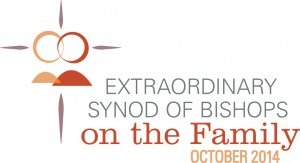 All members of the parish are invited to the November 13 meeting of the Parish Book Discussion Group at 7:30pm in the Parish Center. The topic will be “The Synod of Bishops on the Family”, and our discussion will focus on both the process and structure of decision-making in the Vatican and the substance of the many issues discussed (or that should have been discussed!) There has been extensive press coverage of the October meeting in Rome; thus we are asking participants in the November 13 meeting to read as much as possible and come prepared to express your conclusions, opinions, reservations, hopes and expectations. These are obviously important challenges in the life of our Church and we all have a serious responsibility to become as informed as possible. One new and wonderful source of information is CRUX, the website of Catholic news sponsored by The Boston Globe. For further information and to give us an idea of how many will attend, please contact John Stewart (617.969.0950) or Peter Mongeau.
All members of the parish are invited to the November 13 meeting of the Parish Book Discussion Group at 7:30pm in the Parish Center. The topic will be “The Synod of Bishops on the Family”, and our discussion will focus on both the process and structure of decision-making in the Vatican and the substance of the many issues discussed (or that should have been discussed!) There has been extensive press coverage of the October meeting in Rome; thus we are asking participants in the November 13 meeting to read as much as possible and come prepared to express your conclusions, opinions, reservations, hopes and expectations. These are obviously important challenges in the life of our Church and we all have a serious responsibility to become as informed as possible. One new and wonderful source of information is CRUX, the website of Catholic news sponsored by The Boston Globe. For further information and to give us an idea of how many will attend, please contact John Stewart (617.969.0950) or Peter Mongeau.
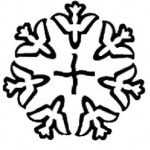 St. John’s Adult Faith Formation Commission
St. John’s Adult Faith Formation Commission
Email: AFFC@stjohnwellesley.org
Comments Off on St. John Book Discussion Group: Thursday, November 13, 7:30pm
Posted in Adult Faith Formation, Book Discussion Group, Important Announcements
Evening for Women – Tuesday, November 4, 6:30pm
 Please join us on Tuesday, November 4 at 6:30pm in the Church Social Hall for our Opening Program of the new year! Evening for Women is an evening of reflection, prayer and sharing. Cardinal Martini once described grace as knowing that “you have been loved for a very long time.” This year’s Program for Women will take us deeply into this truth, that we may help one another embrace its reality and be transformed. Please bring your favorite Fall recipe for our fabulous ‘Pot Luck’ dinner. All Welcome!
Please join us on Tuesday, November 4 at 6:30pm in the Church Social Hall for our Opening Program of the new year! Evening for Women is an evening of reflection, prayer and sharing. Cardinal Martini once described grace as knowing that “you have been loved for a very long time.” This year’s Program for Women will take us deeply into this truth, that we may help one another embrace its reality and be transformed. Please bring your favorite Fall recipe for our fabulous ‘Pot Luck’ dinner. All Welcome!
Moderator: Sr. Evelyn Ronan, SND
St. John’s Adult Faith Formation Commission
Email: AFFC@stjohnwellesley.org
Comments Off on Evening for Women – Tuesday, November 4, 6:30pm
Posted in Adult Faith Formation
FAITH MATTERS: Some Common Elements among the World’s Religions
 In the last blog post, we looked at what religious faith is and the variety of religions we find in the world. In this post, I want to explore some commonalities among religions. Religions tend to use the similar vehicles to transmit their beliefs and practices. These vehicles are scripture, myth, creed, liturgy, and theology.
In the last blog post, we looked at what religious faith is and the variety of religions we find in the world. In this post, I want to explore some commonalities among religions. Religions tend to use the similar vehicles to transmit their beliefs and practices. These vehicles are scripture, myth, creed, liturgy, and theology.
Scripture: The word scripture comes from the Latin scriptura, the act of writing. So the scriptures of a religion generally refers to the official or holy writings of a religion. Scriptures are vehicles for the transmission of a religion in that they contain the stories, myths, rules, and liturgies of a religious community. The book of Scripture for Christianity is the Bible, which is divided into two sections, the Hebrew Scriptures or Old Testament and the New Testament.
Myth: Myth is one of the most misunderstood and misused words in our religious vocabulary. All too often people think that a myth is a fable, a fairy tale, or a fictional story. But a myth is a great deal more than that. Myths are fictional stories, but they are stories that are trying to explain a major religious concept. Myths are true in that, while the details of the story are not scientifically or historically accurate, they are conveying an important religious truth, usually a truth about human nature or the relationship between God and humanity. For example, in the Greek myth of Pandora’s Box, Zeus gives Pandora a box and tells her not to open it. Pandora is overwhelmed by the temptation and opens the box, letting loose all of the bad things in the world: envy, hatred, etc. However, just before everything can escape from the box, Pandora slams it shut keeping hope safe in the box. This myth is not historically or scientifically accurate, but it does try to explain, in terms that regular people can understand, how all those bad things came into the world and why hope is more important and more powerful than the bad. Let us now look at a myth from Christianity. We are all familiar with the story of Adam and Eve and their expulsion from the Garden of Eden. In the story, Adam and Eve, the first people to be created by God, are told not to eat from the tree of the knowledge of good and evil. Eve, however, is tempted and eats; she then convinces Adam to eat from the tree as well. God punishes their behavior by expelling them from the Garden of Eden and by sentencing them to labor throughout their lives. What is important about this myth is not whether or not Adam, Eve, the Garden, and the tree really existed. What is important is that this story tries to explain to regular people why there is sin in the world, why people must continue to work really hard to survive, and why there are rules and punishments. These religious truths are the point of this myth, not the details that were used to get those religious truths across.
Creed: The word creed comes from the Latin word credo, which means “I believe”. A creed, then, is a statement of belief. It is an explanation or recitation of the important beliefs of a religion. The creeds of Christianity are long but careful summaries of what all Christians believe. The Apostle’s Creed was the first one to be written and the Nicene Creed is an expansion of it. Both of these creeds are very ancient; the Nicene Creed was written at the Council of Nicea in the early 4th century.
Liturgy: A liturgy is the formal and ritualized worship of a religion. Liturgies are made up of a number of ritual actions and prayers that are done in the same or a similar way every time. Liturgies allow the community to come together to celebrate their religious faith and to remind themselves of the fundamental truths of their faith. Think of the Liturgy of the Word, which is the first part of the Mass in Catholicism. At a Mass on a Sunday, the Liturgy of the Word is almost always made up of a reading from the Hebrew Scriptures, a Psalm, a reading from one of the letters in the New Testament, a reading from one of the four Gospels, a homily or sermon, a recitation of the creed, and a series of community prayers. This format is the same in every Catholic Church on every Sunday of the year. It is a liturgy.
Theology: The word theology comes from two Greek words, theos (god) and logos (word or study). Therefore, the word theology means words about or study of God. Theology is not just something that is done by professionals; anyone who thinks, talks, and studies about God is a theologian. Theology is the attempt by the people of a particular religion to understand their faith better and to explain it in a way that helps others deepen their faith. In Christianity, theology means trying to understand who God is, how God is related to human beings, and what God wants human beings to do.
Comments Off on FAITH MATTERS: Some Common Elements among the World’s Religions
Posted in Adult Faith Formation, AFFC-blog
October 26: Upcoming AFFC Events
Tuesday, October 28, 5:30 p.m.
LIFE MATTERS: REFLECTIONS ON THE SYNOD ON THE FAMILY
Lecture by James Bretzke, S.J.
Boston College Theology and Ministry Library Auditorium, Brighton Campus Free of charge.
This talk reflects on the recently concluded Extraordinary Synod on the Family called by Pope Francis, and discusses the major themes that emerged from that October meeting of bishops and Church leaders from around the world. Particular attention will also be given to the input offered by the American bishops, especially in light of the perennial concerns voiced about the array of life matters and family values that intersect with political choices Catholic voters must make in the election.
Tuesday, November 4, 6:30 p.m.
EVENING FOR WOMEN
St. John Church/Social Hall, Moderator: Sr. Evelyn Ronan
Cardinal Carlo Martini once described grace as knowing that “you have been loved for a very long time.” Through prayer, reflection and sharing, this year’s
program will take us deeply into this truth, that we may help each other embrace its reality and be transformed. Includes a fabulous ‘Pot Luck’; please bring your
favorite Fall recipe. All Welcome!
November 13, 7:30 p.m.
ST. JOHN’S BOOK DISCUSSION GROUP: THE SYNOD OF BISHOPS ON THE FAMILY
St. John Parish Center
All members of the parish are invited to the November 13 meeting of the Parish Book Discussion Group. The topic will be “The Synod of Bishops on the Family”, and our discussion will focus on both the process and structure of decision-making in the Vatican and the substance of the many issues discussed (or that should have been discussed!) There has been extensive press coverage of the October meeting in Rome; thus we are asking participants in the November 13 meeting to read as much as possible and come prepared to express your conclusions, opinions, reservations, hopes and expectations. These are obviously important challenges in the life of our Church and we all have a serious responsibility to become as informed as possible. One new and wonderful source of information is CRUX, the website of Catholic news sponsored by The Boston Globe. For further information and to give us an idea of how many will attend, please contact John Stewart (617.969.0950) or Peter Mongeau.
 St. John’s Adult Faith Formation Commission
St. John’s Adult Faith Formation Commission
Email: AFFC@stjohnwellesley.org
Comments Off on October 26: Upcoming AFFC Events
Posted in Adult Faith Formation, Important Announcements
October 19: News and Resources from the AFFC
Faith Formation Web Resources
Check out these interesting and informative websites to learn more about the Catholic Church, our faith, and what is going on in the world.
- Crux was recently launched by the Boston Globe and features the work of John Allen (formerly Vatican correspondent for NCR). They are an English language site that seeks to cover world-wide Catholicism.
- National Catholic Reporter is a more established Catholic weekly paper, run by lay Catholics and focusing on the Church in the U.S.
- Catholic News Service is produced by the US Conference of Catholic Bishops and covers the worldwide Church, especially the papacy.
FAITH MATTERS
What is faith – specifically, religious faith? Read the latest post in our FAITH MATTERS blog where we begin to lay the groundwork for a longer discussion of the first person of the Trinity, God the Father.
Upcoming Faith Formation Events at Boston College
Wednesday, October 22, 4:00 p.m.
Panel Discussion at Boston College
Presenters: Claire E. Wolfteich, Roberto Goizueta,
Colleen Griffith, and Thomas H. Groome
B.C. School of Theology and Ministry, 9 Lake Street,
Room 100, Brighton Campus
This event celebrates the publication of Invitation to Practical Theology: Catholic Voices and Visions (2014, Paulist Press), a collection of essays which promises to advance the vital conversation around practical theology, especially in Catholic circles. Free of charge and open to the public. Early registration recommended.
Friday, October 24, 10:00 a.m.-12:00 noon
Taking the Church to the Street
Presentation by Rev. Debbie Little
B.C. Gasson Hall, Rm. 100
Free of Charge.
 St. John’s Adult Faith Formation Commission
St. John’s Adult Faith Formation Commission
Email: AFFC@stjohnwellesley.org
Comments Off on October 19: News and Resources from the AFFC
Posted in Adult Faith Formation, Important Announcements
FAITH MATTERS: What is Faith?
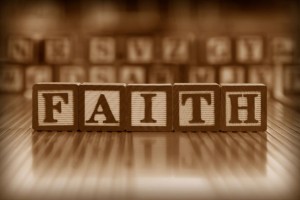 Over the next few weeks, we will begin to take a look at the first person of the Trinity, God the Father. But before we can start that, I would like to lay some groundwork – some preliminary ideas that help us when we start to think more specifically about God.
Over the next few weeks, we will begin to take a look at the first person of the Trinity, God the Father. But before we can start that, I would like to lay some groundwork – some preliminary ideas that help us when we start to think more specifically about God.
A good synonym for faith is trust. Religious faith, then, is trust in a god. For Christians, religious faith means trust in our God, the god of Christianity. Faith in a god or gods is the foundation of most of the major religions of the world. In general, religious faith or trust means that the individual recognizes his or her powerlessness and createdness in the face of the supernatural. In other words, the believer understands the god or gods to be in control of reality as creators of reality and the ones who sustain or keep it going.
Based on this definition of faith, we can begin to understand what a religion is. In the broadest sense of the word, a religion is a community of people who share a religious faith in a god or a specific group of gods. For example, Christianity is the community of people who profess their faith in the Triune God (the Trinity). As you can see, a religion requires a group of people. In addition, the practice of a religion takes place within the community. While all religions do emphasize the internal faith, devotion, and prayer life of the individual, all religions are also defined by the outward signs of faith, devotion, and prayer of the community as a whole. In Christianity, all Christians, no matter what their specific denomination, gather to worship God on Sundays.
Some of the religions of the world are monotheistic. Monotheistic religions believe in and worship only one God. There have been several monotheistic religions in history; the three most common monotheistic religions today are Judaism, Christianity, and Islam. These three monotheistic religions are related historically and share many similar beliefs. Polytheistic religions are much more common in the history of the world. Polytheistic religions believe in and worship more than one god. The largest polytheistic religions today are Hinduism, Shintoism, and the native religions of the indigenous populations of the Americas, Africa, and Australia. The ancient Greeks, Romans, and Egyptians, among many other civilizations, were also polytheistic. Finally, there are several religions that do not fit either of these two categories. They are called religious philosophies because they tend to focus more on the proper behavior for this world or on the individual’s development of their own social or meditative skills. Buddhism is a religion that is not at all concerned about the gods, although they do recognize the existence of gods; Buddhists focus on meditation to clear the mind and reach enlightenment. Confucianism is another religious philosophy. Again, Confucianism doesn’t deny the existence of the gods, but it focuses on how an individual is supposed to live a good and proper life for the benefit of all in the community.
Comments Off on FAITH MATTERS: What is Faith?
Posted in Adult Faith Formation, AFFC-blog

